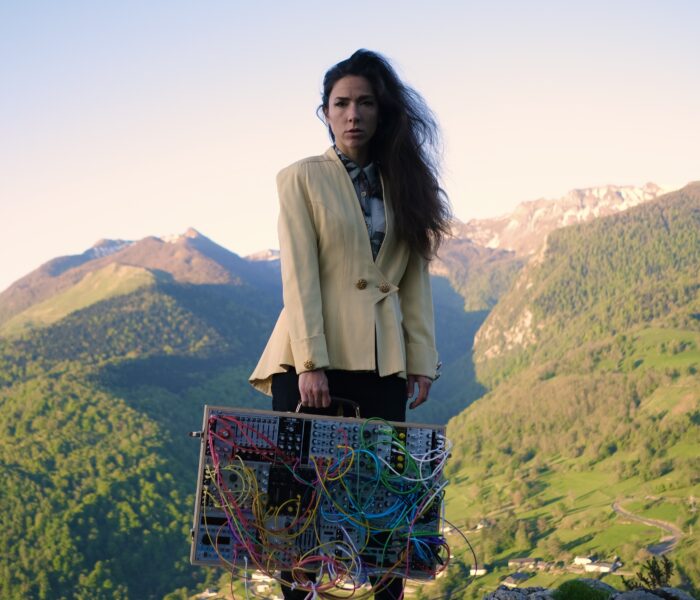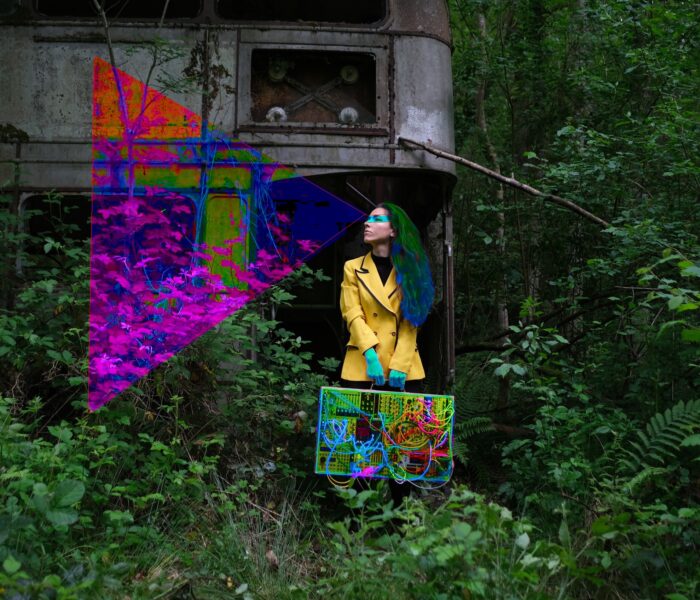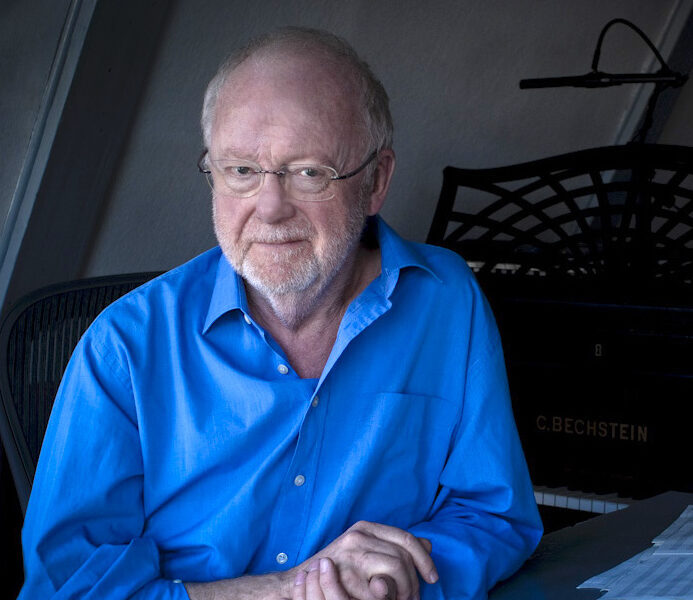Né aux Pays-Bas en 1979, Thomas Ankersmit est artiste sonore et performer, partageant son activité de musicien entre Berlin et Amsterdam. Saxophoniste de formation, il se tourne ensuite vers les synthétiseurs analogiques modulaires qu’il aborde en autodidacte. Après avoir exploré plusieurs d’entre eux, il se fixe sur le Serge, une machine utilisant un système de câbles qui arrive sur le marché après les Buchla, Moog et Arp. Thomas Ankersmit a collaboré notamment avec Phill Niblock, Kevin Drumm, Valerio Tricoli, Tony Conrad ou encore Jim O’Rourke.
Une petite histoire du Serge
Le système Serge tire son nom de son inventeur, Serge Tcherepnin, un compositeur polyvalent et un designer électronique né de parents russes et chinois qui a grandi en France. Autodidacte dans le design électronique et l’élaboration de circuits, Serge dès le début aime réaliser des “junks électroniques”, composant à l’aide de bandes magnétiques et utilisant différents bruiteurs électroniques bricolés à partir de radios à transistor.
Nous sommes au début des années 70, l’époque de l’apogée de Moog, ARP et des synthétiseurs Buchla qui, d’après Serge, pouvaient être améliorés. Ces derniers étaient en effet à la fois coûteux et volumineux. Un système avec un nombre décent de fonctions pouvait prendre jusqu’à un mur entier dans une petite pièce! Serge et ses étudiants Rich Or et Randy Cohen se sont alors penchés sur la question. Après avoir dégagé quelques idées, ils décident de fabriquer leur propre synthétiseur.
Serge finit par quitter l’enseignement pour se lancer plus sérieusement dans la construction de machines, utilisant les premiers designs comme tremplin. La société Serge voit le jour en 1975, dans la région de West Hollywood, puis déménage quelques années plus tard vers le nord de San Francisco à Haight Street. Serge a toujours gardé son coté “simple bohème”, plus porté par l’enthousiasme et l’amour de la musique que de l’argent et le sens des affaires.
Il décide en 1992 de revenir vivre en France. C’est à ce moment qu’il vend les conceptions de circuits qu’il gardait secret à son associé de longue date, Rex Probe, qui fonda par la suite Sound Transform Systems. Les chiffres de production totale restent maintenant encore informels, mais on estime que “des centaines” de systèmes Serge ont été produits dans les premières années.
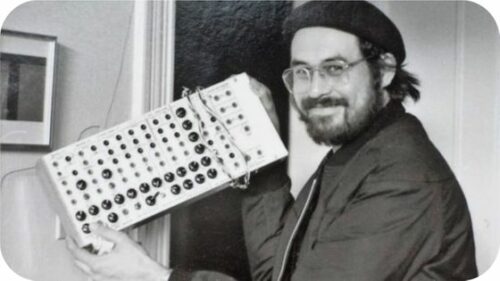


Thomas Ankersmit en concert
Avec une obsession pour le concert live et le haut degré de tension qui en résulte, Thomas Ankersmit façonne le son en temps réel, dans le détournement créatif des outils qu’il utilise et une attention toute particulière à l’espace dans lequel les sons résonnent : précision, clarté, pureté du signal et sophistication des contrôles. Il y a quelque chose de sauvage, un appétit pour le bruit, le chaos et les turbulences dans l’univers sonore d’Ankersmit. « C’est un système très ouvert donc tout peut être connecté à autre chose et tout peut faire des feedbacks par exemple », souligne-t-il. « Je fais de la musique avec les sous-produits des sons électroniques, qu’on considère souvent comme erreurs, les feedbacks, parasites, distorsions, toutes sortes de choses étranges que l’on rejette d’habitude. Les processus de synthèse créent de formidables bruits électroniques, tactiles et organiques. Je me focalise beaucoup sur les interactions manuelles, sur le fait d’avoir plusieurs flux de sons simultanés et d’être capable de les combiner entre eux de manière dynamique. J’ai une matrice 8X8 faite sur mesure que j’utilise comme contrôleur général ; c’est presque l’extension d’une table de mixage de DJ d’une certaine façon, avec laquelle je peux faire des cuts, des fondus enchaînés entre de multiples couches de sons. Je ne fais pas de voltages sophistiqués ni de séquençages, je travaille principalement manuellement. Lorsque je joue live, tous les sons que j’utilise proviennent du Serge ; la moitié est produit en live, l’autre provient des échantillons du Serge. Donc en concert je déclenche toutes sortes de fragments sonores dans Max/MSP1 en utilisant un simple petit contrôleur Midi. Toutes les textures, tous les sons viennent du Serge, qu’ils aient été préparés en studio ou qu’ils soient joués en live. Et j’ai déjà transformé les fragments pré-enregistrés à travers le Serge de nouveau par des filtrages, des transpositions de fréquences, des modulations en anneaux, des panoramiques ainsi que d’étranges procédés utilisant de très rapides modulations aléatoires qui diffractent les sons ».
Après la sortie d’un album en mémoire de Dick Raajmakers2 en 2018, Thomas Ankersmit décide de rendre hommage, 10 ans après sa mort, au travail de la compositrice américaine Maryanne Amacher, pionnière de l’architecture sonore et notamment à l’origine de la découverte de ce qu’elle appelle « des phénomènes psycho-acoustiques » (sons produits par les oreilles de l’auditeur lorsqu’il est provoqué avec un certain stimulus). Derrière ce titre, Perceptual Geography, emprunté à un article de Maryanne Amacher publié en 1979, Thomas Ankersmit propose une relecture du travail de Maryanne Amacher et de son approche tridimensionnelle du son.
Dans cette pièce, Ankersmit explore différentes « modalités » d’écoute : non seulement quels sons sont entendus et à quel moment, mais aussi comment et où les sons sont perçus (dans la pièce, dans le corps, dans la tête, loin, à proximité). Les émissions otoacoustiques (sons émanant de l’intérieur de la tête, générés par les oreilles elles-mêmes) jouent un rôle important. Lorsque le volume est élevé, le signal dépasse les haut-parleurs et commence à déclencher des sons supplémentaires dans la tête de l’auditeur, des sons qui ne sont pas présents dans la musique enregistrée. Le fait de tenir les oreilles avec les mains et de faire de légers mouvements de la tête contribue également à donner vie à ces tonalités. Maryanne Amacher a été la première artiste à explorer systématiquement l’utilisation musicale de ces phénomènes, qu’elle appelle « ear tones ».
Les stimuli sonores des « ear tones » se mêlent à ces textures et en émergent. Une ou deux fois, la musique semble se figer complètement dans le temps, mais un léger mouvement de la tête de l’auditeur révèle des changements.
Le disque est accompagné d’une longue conversation entre Thomas Ankersmit et Serge Tcherepnin, créateur du Serge Modular et ami et collaborateur d’Amacher.
Michèle Tosi
1. Max/MSP est un logiciel musical permettant de faire de la synthèse sonore, de l’analyse, de l’enregistrement, ainsi que du contrôle d’instruments MIDI. Il a été développé par l’Ircam dans les années 1980
2. Né à Maastricht en 1930 et mort en 2012, Dick Raaymaker est un compositeur, dramaturge et théoricien de la musique néerlandaise, pionnier de la musique électronique et des expériences sur bande magnétique : artiste multimédia, il a mené sa recherche et ses activités dans le domaine du sonore dans le but de réunir arts et technologie.
3. Sous le nom exact de “Psychoacoustic Phenomena in Musical Composition – Some Features of a “Perceptual Geography”.
4. Il s’agit d’une version numérique uniquement, car le procédé produisant les « ear tones » ne peut être transféré de manière adéquate sur vinyle.
Photo © Quentin Chevrier



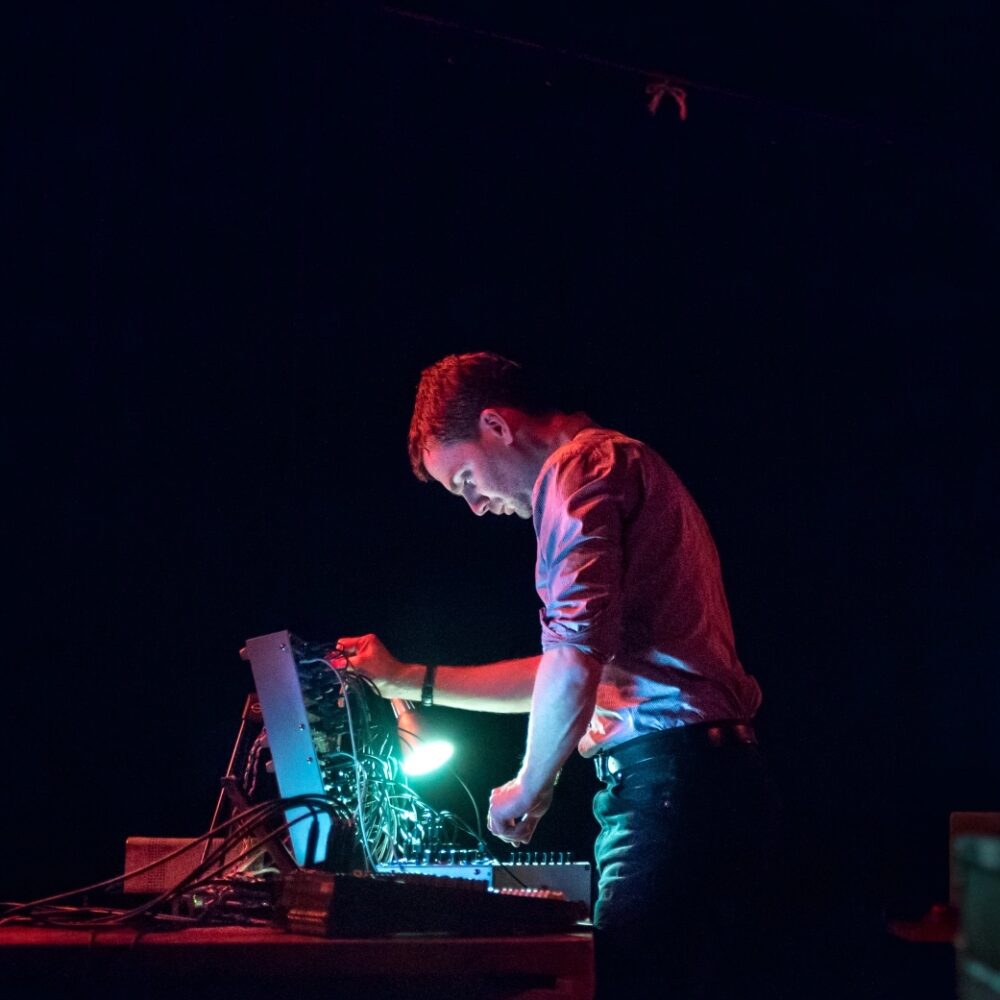)
